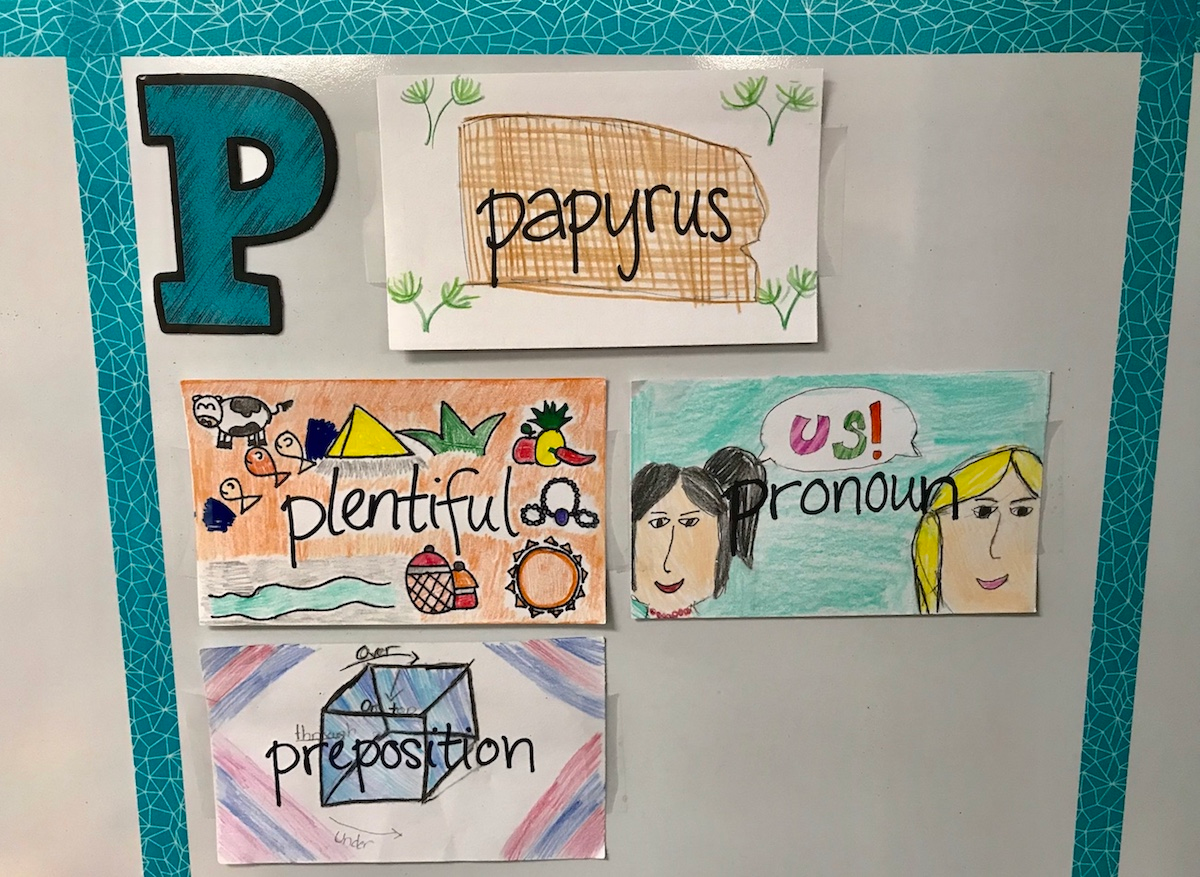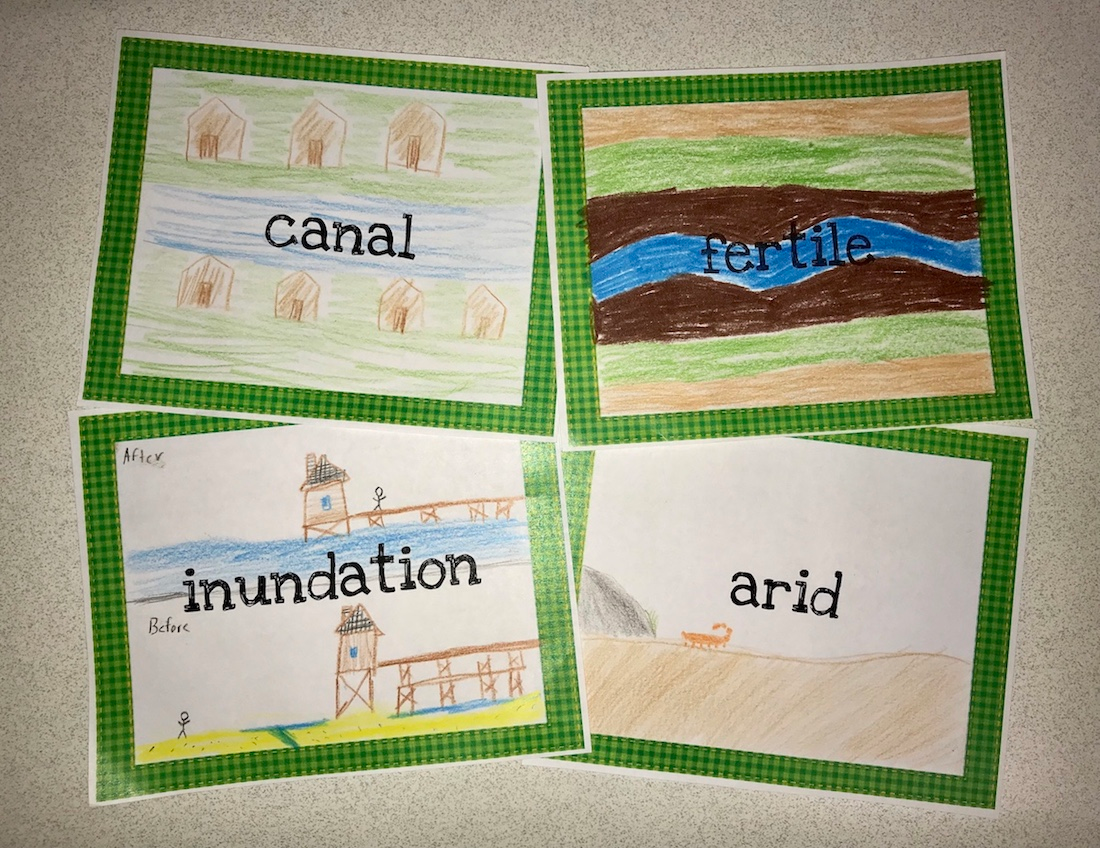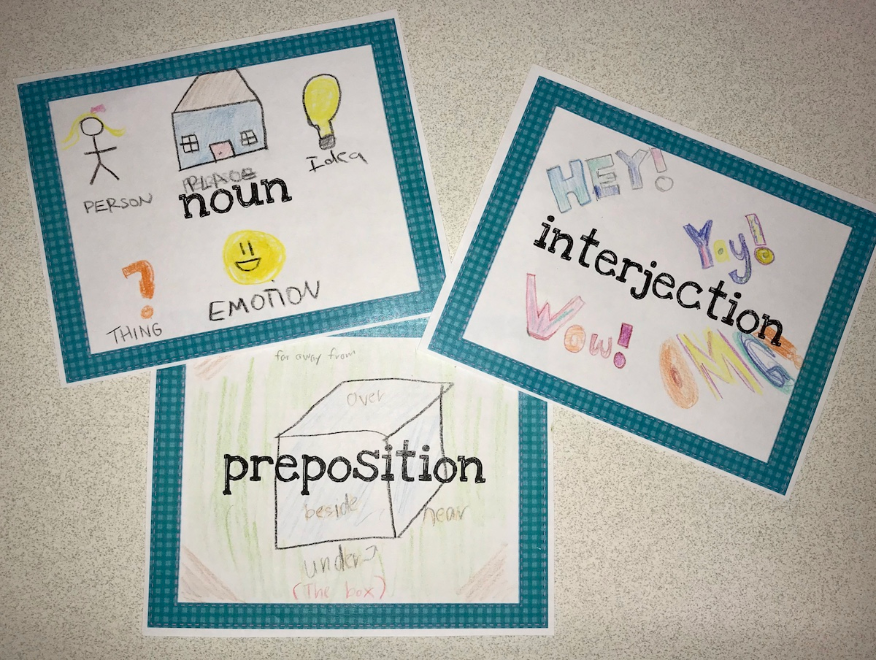What does a conjunction look like? What about a verb or a preposition? Can you draw a picture of a delta or an inundation?
When she started teaching fifth grade, experienced primary educator Julie Ballew realized that she needed to rethink her word wall to best meet the needs of her older students. Word walls can be a powerful tool for reading, writing, and spelling, but in the fifth grade, sight words are less useful for students who read widely and successfully.
As she tried to maximize the usefulness of her word wall, Ballew was also working hard to improve her vocabulary instruction. She tried various methods to help her students with their most challenging words, including content-area word banks and color-coded word cards, but there was little stickiness.
It wasn’t until she combined her word wall and vocabulary instruction with visual aids that Ballew was able to successfully tackle both issues.



